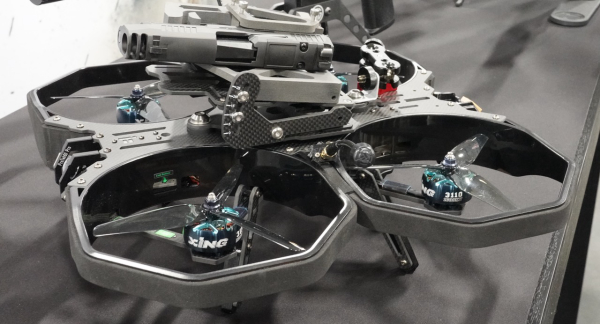We are moving, inexorably, it seems, toward a future where we all have the potential to be served, saved and surveilled, by drones. Despite having broken more than one in the days before they had collision-avoidance programming, I’m a fan.
They radically changed the abilities of budget cinematography and raised production expectations of audiences everywhere. If you think that’s an exaggeration, think of the production qualities of outdoor TV shows before they could capture the sweeping vistas or dynamic following shots we all take for granted today.
But drones aren’t just for bringing artistic vision to life. They’ve been (mis)used by insurance companies to spy on policyholders, unethical hunters to scout (and herd) game and nosy neighbors who just want to know what’s going on the other side of privacy fences.
In case you’ve not been keeping up with the Ukraine, you’ve missed seen the rapid advancement of drones’ darkest capabilities. From armed suicide drones, to drone swarms and drone watercraft, Ukrainian troops have used them to thwart Russian assaults. Russians have mixed their own drones in with missile assaults. And the drone ability to stream video has brought the disposal of combatants to the web via livestream and ubiquitous social media.
But we “ain’t seen nothin’ yet” when it comes to the future droning rapidly toward us.
This week’s wires had news regarding Bombardier’s experimental sea drone. The BRP SD-88 is a completely automated vessel based on the RXT-X, their supercharged 325-hp Rotax equipped personal watercraft. It’s what BRP calls “the perfect platform to be re-envisioned as a stealthy marine drone.”

Bombardier’s proposed Sea Drone. Capable of operating remotely, this new drone could handle a variety of tasks, from interdiction to surveillance and communications. BRP photo with permission.
This new patrol vessel will trade the traditional engine for electric or hybrid propulsion lose the driver platform and add autonomous systems, allowing anything from passive surveillance to interdiction and/or towing capabilities. Three distinct proposed configurations: the SD-88 Tactical, SD-44 Arctic, and SD-COMMS would cover a lot of work currently performed by marine patrols and the Coast Guard.
The SD-88 Tactical would handle some stealthy border patrol and night surveillance. The Arctic would be “cold-adapted” with an ice resistant hull and longer distance operating capabilities. The SD-COMMS could serve as a communications relay station that could be placed -or moved- anywhere to link long-distance communications.
The potential is far reaching. Bombardier’s calls the autonomous vessels "a cost-effective, low-risk, and adaptable platform that would complement aerial and terrestrial surveillance assets while enabling new types of missions.”
Not every company adapting their products is in the drone business, per se.

SIG’s Arkansas ammo plant dedication displays included the prototype of a P320-equipped drone. OWDN photo.
Last October, dedication of SIG Sauer’s new military ammo plant in Arkansas included a display of SIG’s military firepower. Those displays included a P320 pistol equipped drone for those times when a drone would be used for aggression, not observation.
Drones are already being used by law enforcement and public service agencies for surveillance and damage assessments. My local fire department is experimenting with very small, camera equipped drones for emergency surveillance, showing firefighters what’s waiting when they enter a burning building. Police officers already use robots for everything from bomb disposal to stealthy surveillance.
Today, companies like MatrixSpace pitch advances in AI, radar and autonomous flight technology to depict drones as virtual “first-responders” in critical situations. Used in conjunction with their technology, they can be used to create a safety net to notify authorities of trouble along from rail lines to airports or stadiums.

MatrixSpace combines a variety of technologies to put “actionable information” into users hands (top). They even offer a “Radar expeditionary kit” they say will move you from “box to actionable detection in less than 5 minutes (bottom). Screenshots from MatrixSpace website.
Not surprisingly, MatrixSpace also offers “actionable data to ascertain and address airborne vehicles- even in rapid response scenarios”- we civilians might describe that as “anti-drone” intel.
“Skynet” isn’t watching and Robocop’s not impatiently waiting to be dispatched to address troublemakers. Chicken Little’s not squawking because the sky looks pretty firmly in place.
And drones, AI, and Lidar, radar, and a dozen other alphabet-technologies are already being integrated and deployed for everything from search and rescue operations to helping farmers adjust their fertilizers, pesticides and watering practices.
With our near constant issues with air traffic control, these technologies may bring answers to the apparently chronic issue of having too-few qualified air traffic controllers to keep all of us safe when flying.
However…with so many positives applications we need to realize there are always bad actors looking to adapt those same devices to their less-than-honorable ends.
It’s one of many risks inherent in a free society.
But being unaware is to be unprepared. Don’t say we didn’t tell you.
—Jim Shepherd